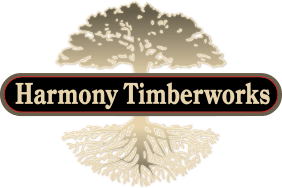Collar Tie with Queen Post Truss
The Collar Tie With Queen Post Timber Truss is an excellent system for a passive solar design. It allows for higher windows which fill upper rooms with daylight. The lower chord can easily be used in an exposed beam second floor system.
A queen will always outdo a king. Unlike the king post that uses a singular supporting column, the venerable queen post truss system utilizes two. Queen post truss systems offer more structural support than the traditional king. Queen posts can also support a wider span, which frees up more overhead room. King posts truss systems are ideal for shorter span distances, while the queen post system is reserved for higher ceiling canopies. Queen posts utilize two vertical posts that are placed on two sides instead of the apex. By avoiding central column placement at the apex, the queen truss system creates a more open air look that doesn’t detract from the elegant, curved arches and rafters. By utilizing two upright beams, homeowners can avoid potential issues related to roof sagging. The queen-posts are kept in their upright position by upper tie ends. The straining beam receives the brunt of the thrust force and stabilizes the conjoining pieces of timber. While queen posts might not be the most aesthetically appealing piece of the timber truss system, they are the backbone of the entire roof. Without these vital components, roofs would be subjected to premature sag from wind and snow loads. For added support, struts are commonly used as a tension member that connect the queen posts to the common rafters. Queen post systems have been used by seasoned architects for centuries and will remain a necessary component of any timber truss system for years to come.
Â
Pros:
- Double-reinforced apex
- More overhead space than traditional King Post
- Engineered to resist thrust forces
- Prevents premature sagging
- Great for heavy wind and snow loads



